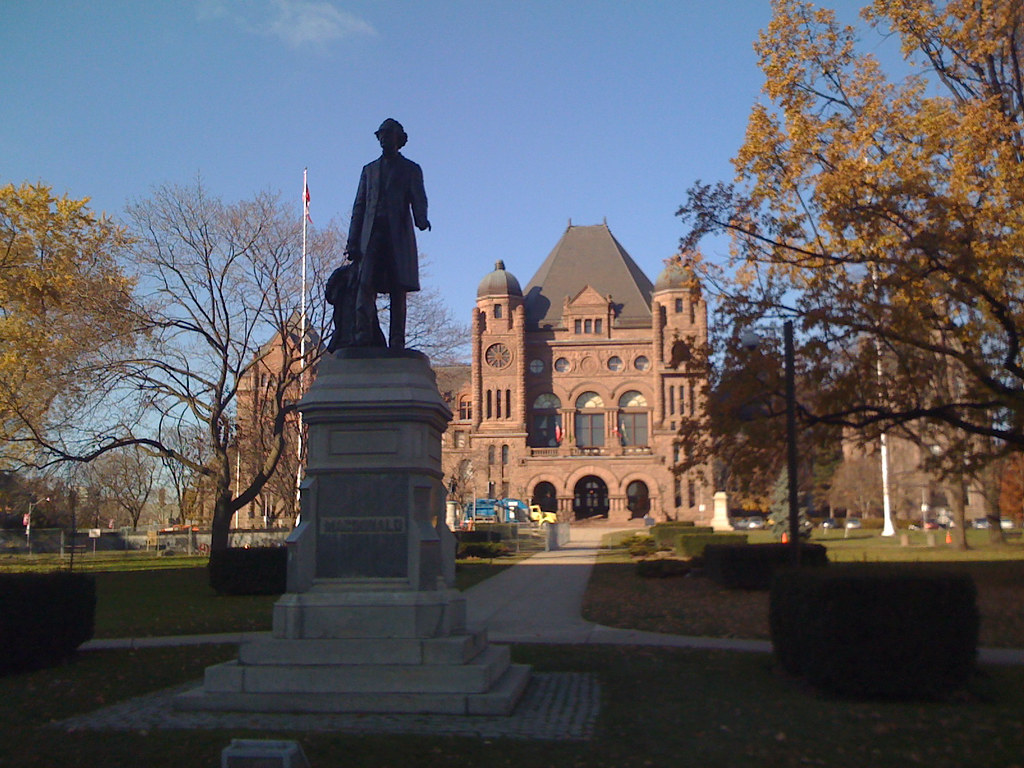
Not just ‘contemporary wokeness’: How the vandalism of colonial statues reflects the rejection of a racist Canada
By Mah Noor, July 15 2021—
Once again, Muslim Canadians were reminded that, while they may be citizens of Canada, not everyone accepts their presence here. This reminder came as an attack by a white terrorist against a Muslim family. Only one survivor – a 9-year-old boy who will now have to live the remainder of his life without his family – survived the attack. Shortly after this incident, a statue of Winston Churchill was vandalized outside of Edmonton city hall. This is no coincidence. The vandalism of colonial statues has long been tied to public frustration with inequality and discrimination and acts as an expression of political protest against the celebration of settler colonialism in Canada — especially during times when it becomes abundantly clear that racism is still alive and thriving in this country.
In the past, there have been many other times when colonial statues were vandalized as acts of protest. Just earlier this month, a statue of Egerton Ryerson, one of the architects of the Residential School system, displayed outside a university also named in his honour, was vandalized and toppled in response to the discovery of the remains of 215 children who were found at the Kamloops Indian Residential School in British Columbia in an unmarked mass grave. These acts of vandalism serve as an expression of the anger of those who are frustrated that even as reminders of Canada’s horrifying history of Residential Schools continue to be found, there continues to be a lack of justice or reparations for the Indigenous Peoples of Canada.
Similarly, in August of 2020, during the height of the Black Lives Matter movement, a statue of John A. Macdonald was vandalized by activists as well. This is not the first time that this particular statue has been vandalized, either. It is clear that certain citizens of Canada do not appreciate the celebration of individuals in Canada’s history who have had a hand in the oppression of Black, Indigenous and people of colour (BIPOC). These figures, while influential and important to Canada’s history, should not be commemorated in public locations where they serve as constant reminders to minorities of the racism that is deeply rooted in Canada’s history which continues to this day. Racism affects these groups in their everyday interactions as well as on a larger scale through systematic inequalities. The reverberations of Canada’s “celebrated” figures are still felt by minority groups to this day. Canada’s first prime minister himself, John A. Macdonald, advocated for racist policies that worked hard to keep Chinese immigrants out of Canada and set Indigenous Canadians on a road towards decades of poverty and isolation that they still face today. How can we then put statues of individuals like these in parks and community centres and expect minority groups of Canada to feel welcome and safe?
Many of Canada’s leaders have condemned these acts of vandalism, feeling that these acts are not justified or a valid means of protest. Canada’s leaders, however, have continuously failed to offer reparations or any substantive action beyond their condolences and “heartfelt” apologies to minority groups. These leaders fail to realize that these acts of vandalism are not acts of recklessness or disrespect, but manifestations of frustration from the citizens that they continuously fail. Jason Kenney, the premier of Alberta, seems to have missed the mark spectacularly as he deemed the vandalism of a statue of Winston Churchill as an act of “contemporary wokeness” in a tweet, rather than seeing it for what it was. This is unsurprising coming from an individual who has shown himself to be insensitive towards minority groups in the past. In the same tweet, Kenney acknowledged the “complex” legacy of Churchill and many others and while I agree that we should continue to discuss the role that those who founded Canada had in the oppression of minority groups, I disagree that we should honour those who secured peace and freedom for a select group that they deemed to be superior to BIPOC individuals.
Colonial statues should not be used as a means to publicly commemorate and celebrate the figures in Canada’s settler history, but instead placed in museums with a description of their views and the atrocities they committed alongside any good that they did. To be able to learn from history, we cannot continue to look at it through a rose-tinted lens. The influential individuals of Canada’s early colonial history should not be memorialized and idealized, especially not while racism is still rampant in Canada. They should be acknowledged to be flawed individuals who, while having a hand in developing the country we live in today, also had racist attitudes and committed appalling crimes towards BIPOC individuals that are unacceptable especially in today’s Canada.
If Canada is going to move towards equality rather than remain stagnant and allow racism to fester and hate crimes to continue, a stop needs to be put to the continued celebration of those who allowed racism to proliferate in Canada instead of speaking out against it. One way in which Canadians have already started to do so is in refusing to celebrate Canada Day after being exposed to so much evidence that Canada is not a nation worth celebrating quite yet. In continuing in actions like this, change can begin, however slow the progress may be.
This article is part of our Opinions section and does not necessarily reflect the views of the Gauntlet’s editorial board.
